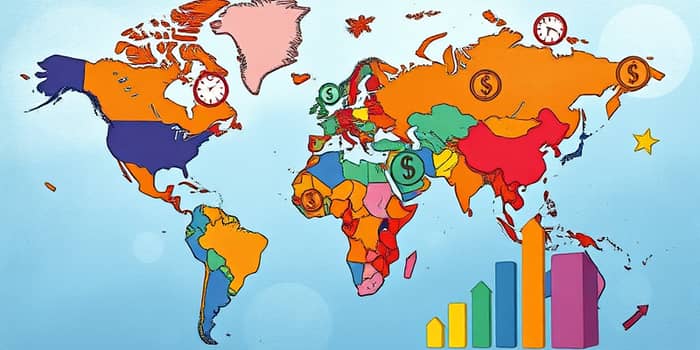
As the world recovers from the inflation surge of 2022, many had hoped for a swift return to low price growth. Instead, forecasts suggest that inflation expectations are not drifting lower and may remain abnormally high for years to come. This new normal demands vigilance from policymakers, businesses, and households alike.
After peaking near 9% in 2022, global headline inflation has moderated. Leading institutions such as the OECD and the IMF predict average inflation to fall to around 4.2% in 2025 and further to 3.2% in 2026.
However, revisions over the past quarter have edged these projections upward. Trade protectionism, supply chain frictions, and persistent wage pressures have combined to create stickier price pressures than anticipated. Surveys of economic experts now place global inflation at 4.0% in 2025 and 3.9% in 2026, reflecting a slight upward drift in medium- to long-term expectations.
The resilience of inflation has multiple roots, each reinforcing the other.
Not all economies face the same inflation dynamics. Advanced economies have generally seen more progress in cooling price pressures, whereas many emerging markets remain challenged.
Türkiye, for example, is projected to record 31.4% CPI inflation in 2025 and 18.5% in 2026. In contrast, Colombia’s forecast declines from 4.7% to 4.0% over the same period. The United States sits between these extremes, with CPI inflation forecast at 3.2% in 2025 and 2.8% in 2026—both figures above its 2% long-term target.
Central banks face a delicate balancing act. To prevent expectations from becoming unanchored, they have maintained elevated benchmark rates. Yet, the risk of tipping economies into recession remains ever-present.
The U.S. Federal Reserve has signaled patience, emphasizing data dependency. It must weigh the benefits of higher rates against the potential slowdown in consumer spending and investment. In Europe and other advanced regions, rate decisions reflect similar caution, as policymakers grapple with uneven recoveries.
Price movements vary sharply across key categories. Food and energy prices, which drove much of the early surge, have moderated somewhat—but remain volatile. Housing costs and prescription drug prices in the U.S. have displayed resistance to disinflation, suggesting a new floor for core inflation measures.
The energy transition may ease fossil fuel prices over time, but in the near term, gas costs are projected to stay elevated in North America and Europe. Meanwhile, agricultural markets face weather-related uncertainties that could trigger fresh supply shocks.
Analysts warn that returning to pre-pandemic, sustained low inflation is unlikely. Instead, a higher plateau may become the norm, punctuated by periodic shocks. Key risk factors include:
The era of consistently low inflation appears to have faded. Instead, the world may settle into a regime of moderate but persistent price pressures. For policymakers, the task is clear: anchor expectations without derailing growth. Businesses and households must plan for a future where sticky inflation expectations influence everything from long-term borrowing costs to wage negotiations.
Understanding this new landscape—and adapting accordingly—will be vital for safeguarding prosperity in an unpredictable global economy.
References













